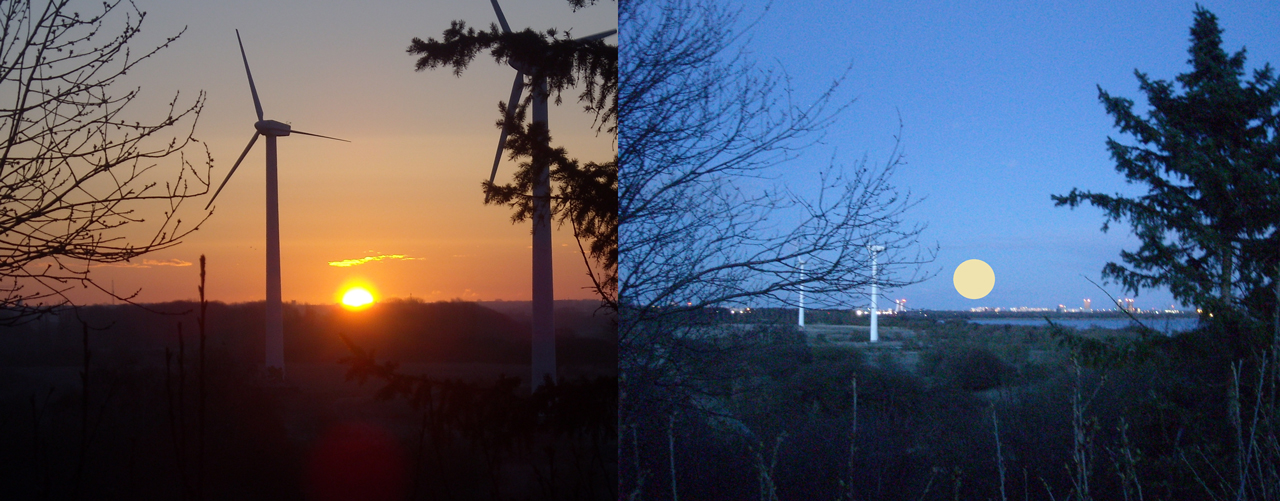Prehistoric lunar eclipse hits Denmark on 27 July
It may sound like ‘fake news’, but it is true enough. On Friday, July 27th, a total lunar eclipse will be visible in Denmark, if weather permits. That the lunar eclipse has prehistoric roots may sound a little strange. The explanation is that lunar eclipses follow a 19-year cycle and this cycle can be traced both forwards and backwards in time.

Previously it was believed that this cycle could only be repeated once or twice, but in reality it can in principle be repeated an infinite number of times (as long as the moon is in its current orbit). However, not all of the eclipses are visible from a particular location. This endless cycle works in such a way that the full moon shifts its rising point a little bit every 19 years and over three to four passes the date changes by a day. During a complete cycle of the overall cycle, the full moon will have been through all of its possible rising point on the horizon twice. The previously unknown overall cycle lasts approximately 16,000 years.
Stone age graves and a spring full moon
With the coming lunar eclipse, the full moon will rise to the southeast. This full moon belongs to the same eclipse cycle where the full moon approximately 5000 years ago rose slightly south of east. This direction is called “skew” east and is the direction of the opening of most of the megalithic tombs in Western Europe. “Skew” east is also the direction for the rising point of the spring full moon.
It is therefore striking that a third of all Danish passage graves (Jættestuer (passage graves) are mysterious barrows from the Stone Age) and dolmens, built about 5000 years ago, have their entrance tunnels pointing in this direction. So it is very possible that our prehistoric ancestors saw a lunar eclipse belonging to the cycle that brings us the upcoming lunar eclipse.
Next opportunity in 2037
The next lunar eclipse in this 19-year cycle will be seen in Denmark on 27 July 2037, when the full moon will rise in the same direction as the full moon in the upcoming lunar eclipse.
The possible lunar eclipse cycles, 36 in all, are offset by the equivalent of 11 calendar days. The two neighbouring cycles, sister cycles – we can call them, will give Denmark visible eclipses on 6 August 2036 and 17 July 2046. There is a corresponding set of sister cycles in May. The next visible lunar eclipse from this set of cycles the 15 May 2022.

Diagram of a lunar eclipse. The part of the moon that is in the full shadow of the Earth - Umbra – is shaded, but the part that is only partially shaded - Penumbra – almost looks normal. Drawing: (Segredo, Wikimedia Commons).
More lunar eclipses than normal
Occasionally, the many cycles cross each other. This gives rise to more lunar eclipses than normal (less than one visible lunar eclipse per year in Denmark). Around 5,000 years ago there was such an over frequency of lunar eclipses and we are currently in a similar period, which will end within the next 100 years. During this period, we will have 19 visible summer lunar eclipses in Denmark with full moons rising in the southeast. It will be similar in the spring, fall and winter.
And as an aside, the climate in Denmark was the same about 5000 years ago as the climate we are on course towards with today’s climate change.
See also:
Contact
 Claus Clausen, PhD in cultural astronomy & astrophysics, Niels Bohr Institute, University of Copenhagen, Phone: +45 2033-7178
Claus Clausen, PhD in cultural astronomy & astrophysics, Niels Bohr Institute, University of Copenhagen, Phone: +45 2033-7178
Måneformørkelse
